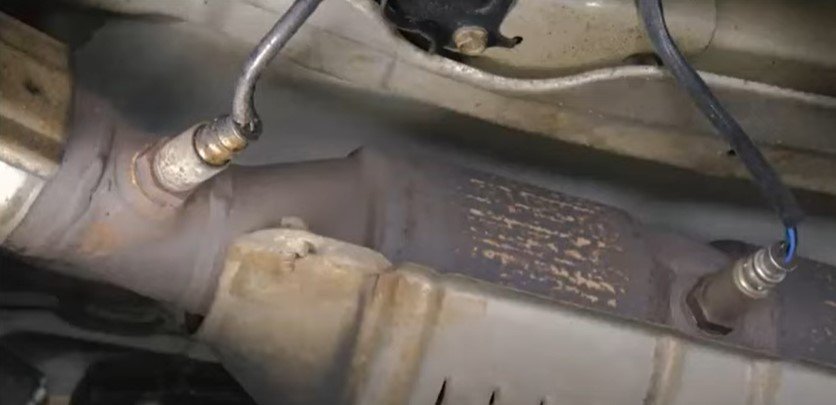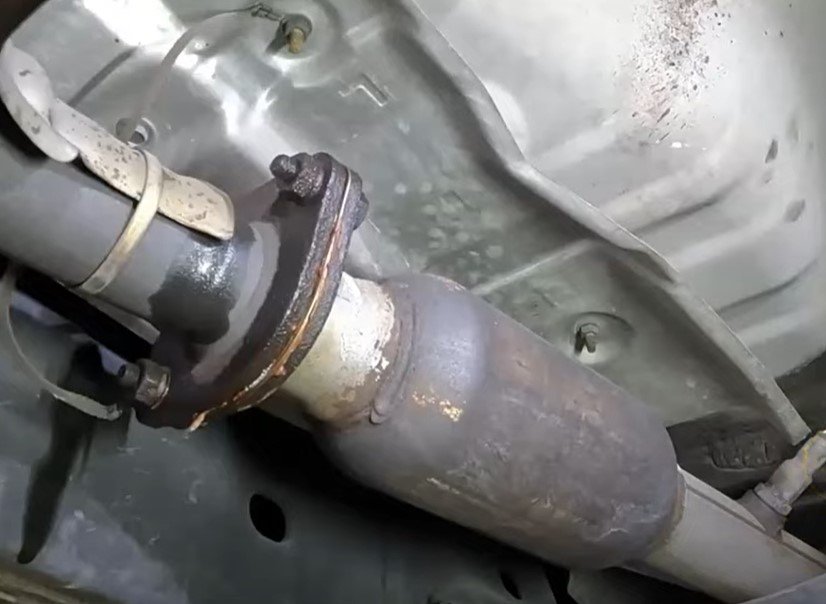Last Updated on June 16, 2025
If you’ve scanned your vehicle and discovered the P0430 code, don’t panic. This code is one of the most common OBD-II trouble codes that indicates an issue with your vehicle’s emissions system. Specifically, the P0430 code relates to the catalyst system efficiency below threshold (Bank 2). In this comprehensive guide, we’ll break down what the P0430 code means, what causes it, how to recognize the symptoms, and most importantly, how to fix it to restore your vehicle’s performance and emissions compliance.
What Does the P0430 Code Mean?
The P0430 trouble code is defined as:
Catalyst System Efficiency Below Threshold (Bank 2)
Your car’s engine control module (ECM) monitors the efficiency of the catalytic converter using oxygen (O2) sensors placed before and after the converter. When the ECM detects that the catalytic converter on Bank 2 (the side of the engine that does not contain cylinder #1) isn’t performing as efficiently as it should, it triggers the P0430 code.
Catalytic converters play a critical role in reducing the amount of harmful emissions your vehicle emits by converting carbon monoxide, hydrocarbons, and nitrogen oxides into less harmful substances. If the converter on Bank 2 cannot maintain efficiency, it means emissions are not being processed properly.
Common Causes of P0430 Code
There are several potential reasons why your vehicle might trigger the P0430 code. These include:
- Faulty Catalytic Converter – The most common reason. Over time, the internal ceramic honeycomb structure inside the converter can become clogged, melted, or broken down due to high temperatures or contamination.
- Oxygen Sensor Failure – Faulty upstream or downstream O2 sensors may provide inaccurate data, leading the ECM to believe there’s a catalytic converter problem.
- Exhaust Leaks – A leak in the exhaust system before the catalytic converter can introduce extra oxygen and affect sensor readings.
- Engine Misfire or Running Rich – If the engine is misfiring or injecting too much fuel, unburned fuel can overheat and damage the catalytic converter.
- Leaking Fuel Injectors or High Fuel Pressure – These can lead to an overly rich air-fuel mixture, overworking the converter.
- Oil or Coolant Contamination – Blown head gaskets or valve seals can allow engine fluids into the exhaust, which degrades the converter.
- Sensor or Wiring Issues – Corroded connectors, frayed wiring, or poor electrical connections can interfere with sensor communication.

Symptoms of a P0430 Trouble Code
You may or may not notice symptoms right away when the P0430 code appears. However, common signs include:
- Check Engine Light (CEL) – The most obvious sign; your dashboard warning light will come on.
- Decreased Fuel Efficiency – The engine may consume more fuel than usual due to improper combustion.
- Reduced Engine Performance – You may experience sluggish acceleration, stalling, or poor throttle response.
- Rotten Egg Smell – Caused by sulfur content in unburned fuel when the catalytic converter isn’t doing its job.
- Failed Emissions Test – Vehicles with this code will almost always fail a smog or emissions inspection.
- Rattling Noise Under the Car – If the converter is physically damaged inside, you may hear a rattle when idling or accelerating.
How to Diagnose the P0430 Code
Diagnosing the P0430 code requires some basic tools and a step-by-step process:
Tools Needed:
- OBD-II scanner
- Infrared thermometer (optional)
- Digital multimeter
- Smoke machine (optional for leak detection)
Step-by-Step Diagnosis:
- Scan the Vehicle – Use an OBD-II scanner to confirm the P0430 code and check for any related trouble codes (e.g., misfires or fuel trim errors).
- Inspect for Exhaust Leaks – Look and listen for any leaks before the catalytic converter. Smoke machines can help find small leaks.
- Check O2 Sensor Readings – With the engine running, use live data to compare the upstream (pre-cat) and downstream (post-cat) oxygen sensor readings. Similar readings often suggest converter inefficiency.
- Check Catalytic Converter Temperature – Use an infrared thermometer to compare the temperature before and after the catalytic converter. The outlet should be significantly hotter if the converter is working.
- Inspect Spark Plugs and Fuel System – Look for fouled plugs or injector leaks. Misfires can damage the catalytic converter over time.
- Visual Inspection of Wiring and Connectors – Examine sensor wiring for corrosion, loose connections, or rodent damage.
How to Fix the P0430 Code
Once you’ve diagnosed the issue, fixing it depends on the root cause. Here are the most common solutions:
- Replace the Catalytic Converter – If testing confirms the converter is degraded, replacing it is the most reliable fix.
- Replace O2 Sensors – If sensors are found to be slow or inaccurate, replacing them can restore proper readings.
- Fix Exhaust Leaks – Repair leaks with new gaskets, clamps, or welds to ensure accurate sensor data.
- Repair Misfires – Replace spark plugs, coils, or injectors to stop fuel-rich conditions from damaging the converter.
- Address Fuel System Problems – Calibrate or replace injectors, repair fuel pressure regulators, or replace fuel filters if needed.
- Fix Wiring and Connector Issues – Corroded or broken wires should be repaired or replaced.
Important Tip: Always reset the check engine light using your OBD-II scanner and test drive the vehicle for one or two full drive cycles to confirm the issue is resolved.
Can You Drive with a P0430 Code?
Technically, yes—but it’s not recommended for extended periods. Driving with a failing catalytic converter or unresolved engine issue can:
- Cause additional damage to the exhaust or engine
- Reduce fuel efficiency
- Result in a failed emissions test
- Produce excessive emissions harmful to the environment
- Lead to more expensive repairs down the road

If you must drive, keep trips short and avoid hard acceleration until the issue is fixed.
How Much Does It Cost to Fix the P0430 Code?
Repair costs will vary based on vehicle make, model, and labor rates. Here’s a general estimate:
| Repair | Estimated Cost (Parts + Labor) |
|---|---|
| Catalytic Converter Replacement | $800 – $2,500 |
| O2 Sensor Replacement | $150 – $400 |
| Exhaust Leak Repair | $100 – $300 |
| Ignition or Injector Repair | $100 – $500 |
| Wiring Repair | $50 – $200 |
Getting an accurate quote from a certified mechanic is the best way to plan for repair expenses.
How to Prevent the P0430 Code in the Future
Preventative maintenance goes a long way in avoiding emissions-related trouble codes:
- Perform Regular Maintenance – Follow manufacturer schedules for oil changes, spark plug replacement, and air/fuel filter servicing.
- Use Quality Fuel – High-quality gasoline burns cleaner and helps prevent carbon buildup.
- Fix Engine Issues Promptly – Don’t ignore rough idles, misfires, or check engine lights.
- Check for Leaks – Regularly inspect for intake and exhaust leaks and repair them early.
- Avoid Contaminants – Ensure that oil and coolant don’t enter the combustion or exhaust system through damaged gaskets.
Conclusion: Final Thoughts on the P0430 Code
The P0430 OBD-II trouble code is a clear sign that your vehicle’s emissions system isn’t functioning at peak efficiency. While it can seem daunting, this issue is manageable with proper diagnosis and repair. From replacing a catalytic converter to fixing a simple exhaust leak, resolving the P0430 code is essential for your car’s performance, fuel efficiency, and environmental responsibility.
Whether you’re a DIY mechanic or plan to visit a repair shop, this guide offers the knowledge needed to address the issue confidently.
Frequently Asked Questions (FAQs)
Q1: Is the P0430 code serious?
Yes, while your car may still be driveable, the P0430 code indicates that your vehicle is releasing higher emissions. Ignoring it can lead to failed inspections, reduced performance, and further damage.
Q2: Can a bad O2 sensor cause a P0430 code?
Absolutely. A faulty O2 sensor may provide inaccurate readings to the ECM, making it believe the catalytic converter is underperforming.
Q3: How long can I drive with a P0430 code?
You can usually drive short distances without immediate danger, but prolonged driving could worsen the problem and damage other components.
Q4: Will a fuel additive fix a P0430 code?
Fuel additives might help clean minor carbon deposits, but they won’t fix a damaged catalytic converter or failing sensor.
Q5: Is Bank 2 on the left or right side of the engine?
Bank 2 refers to the side of the engine that does not contain cylinder #1. The position varies depending on engine layout, so refer to your vehicle’s manual.
Q6: Will replacing only the catalytic converter clear the P0430 code?
If the converter is the root cause, replacing it should clear the code. However, it’s essential to verify that no other issues (like misfires or sensor faults) are contributing.
Meet our professional car mechanic, Russell D. Steele, who has been in this field for five consecutive years and works with several automotive companies. He completed the "AUTOMOTIVE & LIGHT DUTY DIESEL TECHNOLOGY" course from NorthWest Lowa Community College, where he learned essential diagnostic and transportation management skills and became a certified mechanic.
